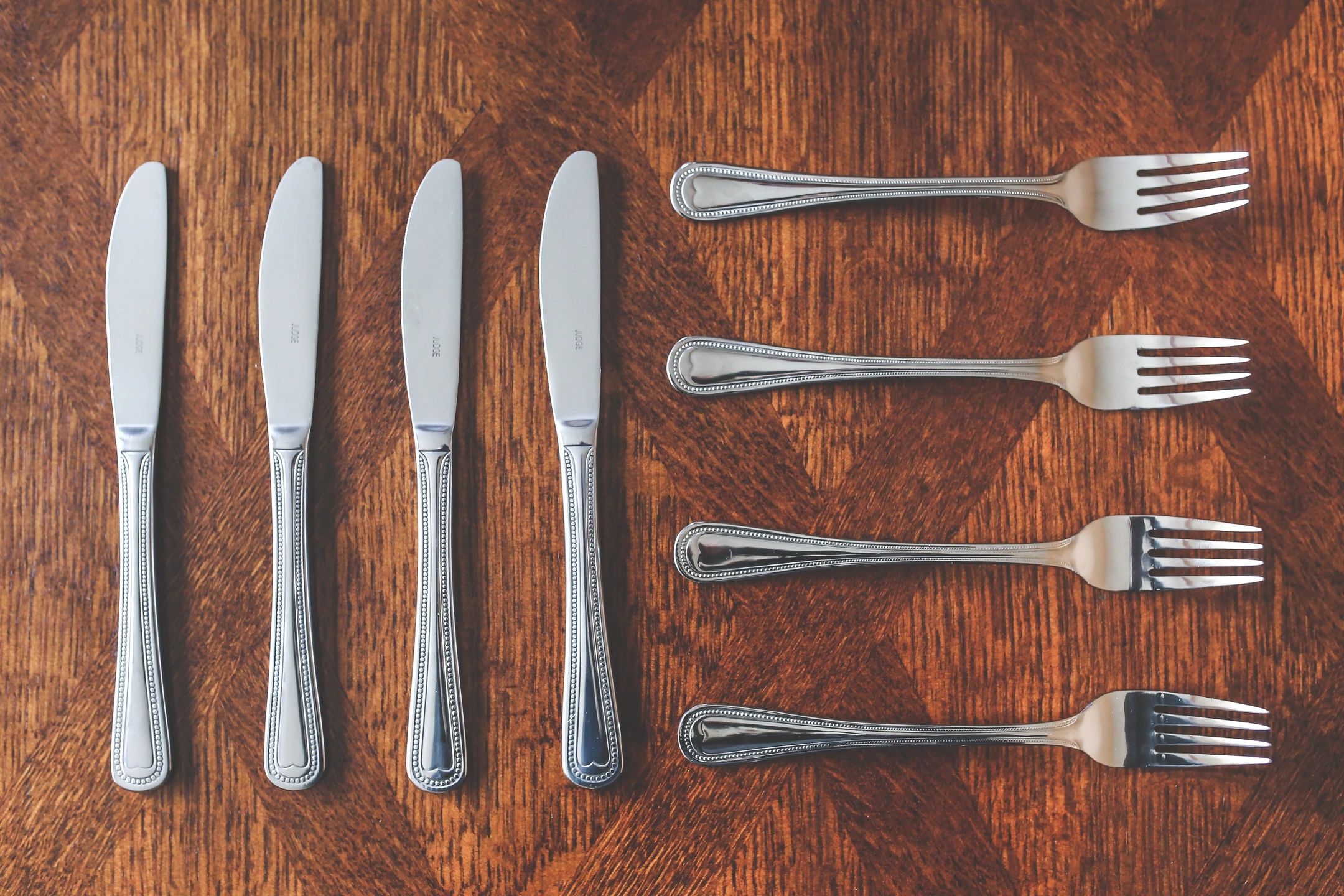That knife you have in your kitchen drawer you call a ‘butter knife’ is only one of five types of knives with the same name. It is, not by any means, an ordinary table knife. Its ancestry goes back further than any Ancestor.com could take you. For all intended purposes that 6” kitchen tool is the original utility knife. Calling it a butter knife does it an injustice and does not allow it to fulfill its greater potential.
The knife was once made from wood or stone, and only the extremely wealthy could afford such a trinket. Hand carved for a specific person or household, the knife was rarely commissioned for yourself, but a friend or wealthy relative would gift one to you. If they were beyond filthy stinking rich, you could be getting a full set of four. Hold your breath! Wow! Now that is decadence at its best. The ruling class in France would present one to a visiting royal from some other, less prosperous country. This made many friends for the French court, and it also made enemies. If you were visiting France and did not go home with a butter knife, it could be war! It would be good to note here, that there are no reports of wars starting over the nongifting of a butter knife.
Let’s take a little trip. We come up from the France of old to 1823, and in a small blacksmith shop outside of Paris a smith named John was working on an invention that he saw as bringing the royals closer to the people. Banging away on his anvil day and night, John came up with a stroke of genius idea. ‘Couteau a beurre en acier’. Butter knife made of steel. John saw this as the invention to put the royals and the peasants on a level playing field. John’s knife would not sell at inflated prices, and it was guaranteed for at least the life of the original owner. Which brings us to the price. John was able to mass produce these knives at a phenomenal rate of 15 per day! That would put John and his wife in tall cotton! Needless to say, Mrs. John was 100% behind her husband…this time. Unlike when John had the bright idea of attaching small, heavy pieces of crossed steel on the end of a long leather strap, and the other end to a horses, saddle horn. The idea was called, ‘The Horse Anchor.’ Not one of Johns best. Needless to say, Mrs. John could not get behind that one.
John’s steel butter knife went over like a smash, and every woman in a three-mile radius had to have her own. John was more than happy to sell one more, more, and more. Jump ahead some more. To your childhood. It is interesting that you had a relationship with John’s butter knife too. You remember, when your father was working on something like say, the rabbit ears on the television set. He needed a screwdriver, and instead of going all the way out to the garage he sent you into the kitchen to get a butter knife. You knew exactly what he was going to do it, didn’t you? You knew he wasn’t going to spread butter on the rabbit ears, right?
After he tightened the screws with the knife, he handed it back to you to put back in the drawer. Or those times when you came home from wherever it was you were and you had mud caked on the bottoms of your shoes. Before you could come in the house, your mother handed you one of John’s knives and told you to scrap the mud off your shoes. Remember the mailman bringing a box to your house with the ends and top all taped up with that real sticky Post Office tape? Guess what you used to cut through it in order to open the box. Yes sir, John’s knife again.
Sometimes, drawers, doors and windows would stick closed, and you in all of your wisdom and ingenuity reached for the butter knife to pry them open. On some occasions, especially when you were alone in the house, you would crank up the stereo console and put a 45 on the turntable, you made sure it had a drum solo in it somewhere. Why? Because you would grab two of John’s butter knives and sit on the comfy chair, pull the ottoman close, and you were Ringo Starr of the Beatles, Led Zeppelin’s John Bonham, or Keith Moon of The Who. Of course, you were beating that poor ottoman near a coma with your butter knife drum sticks.
So, there you have it. Not just a butter knife, and certainly a kitchen utensil far from its original purpose, and most likely one of the most versatile, complex, simplest, and most interesting invention for the culinary profession, the butter knife is an instrument with a purpose that has been repurposed so many times over the years, it is snobbery to use it simply to spread butter on apiece of toast. This was actually the first Swiss Army Knife prototype of the 19th century.
Think of all the other things MacGyver could do with a knife like this and a role of duct tape. A shame it couldn’t be folded.
The Original MacGyver Knife





